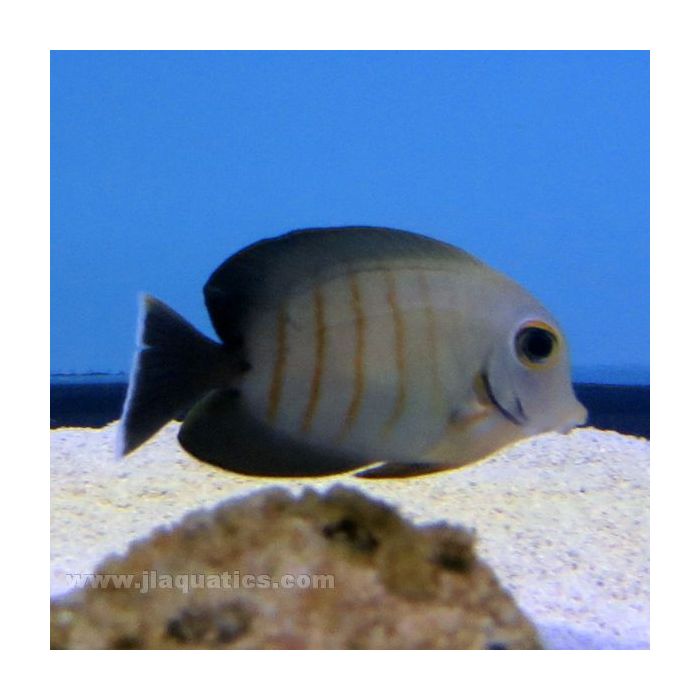Eibli Tang (Indian Ocean)
The Eibli tang has a bold and unique pattern which is especially vibrant as a juvenile. Its appearance mimics the Eibli angelfish, consisting of a dusty grey background with yellow fins and a black tail, orange chest, and red stripes running vertically down the body. The eyes are ringed with orange and the tail is edged in white. This mimicry helps it to avoid confrontation with other herbivores over grazing territory, and also possibly predators which would target it as a tang. As an adult it takes on the color of pale tanned leather, giving it a soft appearance. Its face, is colored as brushed silver, with a dark patch on the gill covers and a dark eye, and the tail is edged in yellow. Males and females are visually identical.
The Eibli tang can grow to be approximately 10 inches long and needs a large aquarium as an adult, we recommend at least 120 gallons or larger.
Members of the genus Acanthurus tend to have very round shaped bodies, and come in a wide range of sizes, some being on the smaller side and some becoming large and grand. This genus contains approximately half of all tangs, so there are lots to choose from. They don't appreciate living with tangs sharing the same shape, however are typically non-aggressive with other fish.
Tangs are also called surgeonfish or doctor fish because they have at least one spine just in front of the tail which, when the tail is bent, can be stuck out and used as a threat display or weapon against competitive fish or predators. It is important to be cautious of this spine when handling the fish in a net. They feel most secure when there is plenty of live rock to hide in, as well as open space for swimming. In the wild some tangs live in schools, however in the confines of an aquarium it is usually best to have only one of each genus, or they may be extremely aggressive to each other. They are typically very peaceful with other types of fish.
Care should be taken with tangs to ensure they do not catch external parasites, such as Marine ICH and velvet, to which they are very prone.
Tangs do not eat coral or invertebrates and are considered reef safe. They are primarily herbivorous, and although they love to eat meaty foods, they must be fed plenty of marine algae in order to remain healthy and vigorous. Having a proper diet may also reduce aggressive behaviors; tangs naturally graze on algae throughout the day. Diet should include plenty of marine algae and Spirulina, frozen mysis shrimp, and other high quality items. They typically learn to eat dry foods easily. It is preferable to feed more than once a day, with an algae clip offered approximately every other day.
Customers who bought this also purchased
 Clown Tang (Asia Pacific)Out of stock
Clown Tang (Asia Pacific)Out of stock
















